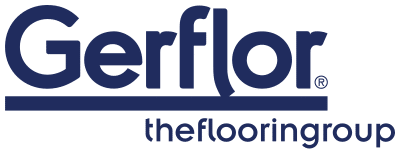JD Edwards is recognized as an essential ERP (Enterprise Resource Planning) solution, adopted by companies of all sizes and sectors. Its versatility and robust functionality make it a valuable tool for managing business processes. However, to get the most out of this platform, it’s imperative to understand how to optimize it. In this article, we’ll dive into best practices for improving your workflow in JD Edwards. By applying these strategies, you’ll be able to maximize productivity while reducing inefficiencies.
Why optimize your JD Edwards workflow ?
Optimizing your JD Edwards workflow isn’t just about saving time; it’s a strategic move that can transform the way your business operates. Improved productivity, for example, is one of the key benefits of this optimization. By streamlining processes, your teams can concentrate on value-added tasks, increasing their output. When workflows are fluid, employees are less likely to encounter obstacles that slow down their progress.
Error reduction is another crucial aspect. Well-designed workflows minimize the risk of human error, ensuring greater data accuracy. This is of paramount importance in an environment where every detail counts, especially when it comes to decisions based on critical data. A reliable information system also enables better decision making. With real-time data at their fingertips, managers can make informed decisions that will have a positive impact on overall company performance. In short, optimizing your workflow with JD Edwards means investing in your company’s future.
Analysis of your current processes
Before starting the optimization process, it’s essential to carry out a thorough analysis of your current processes. The first step is to map your existing workflows. This means identifying each stage of your business processes, noting the tools and resources used at each phase. Such a map will enable you to clearly visualize the interactions between different teams and systems, while highlighting potential sticking points.
Once this mapping has been carried out, it’s crucial to identify bottlenecks. This involves analyzing where processes are slowing down. Sometimes these slowdowns are due to technical problems, but they can also be the result of training shortcomings or poorly designed processes. A clear understanding of these bottlenecks will enable you to target areas requiring improvement.
User feedback also plays a fundamental role in this process. Involving end-users in an open discussion will enable you to better understand their day-to-day challenges. Their feedback is invaluable in identifying areas for improvement. By taking these perspectives into account, you can ensure that the solutions you implement really do meet users’ needs.
Best practices for optimizing JD Edwards
Automating repetitive tasks
One of the most effective ways of optimizing your JD Edwards workflow is to automate repetitive tasks. The system offers several tools to facilitate this automation, including Batch Jobs. These features enable you to schedule repetitive tasks to run automatically at predetermined times, freeing up time for your teams to concentrate on more strategic work.
What’s more, using the Orchestrator tool is another way of streamlining processes. This tool enables you to automate complex processes while integrating JD Edwards with other systems, boosting the overall efficiency of your workflow. By eliminating manual and repetitive tasks, you reduce the risk of errors and improve user satisfaction, enabling them to concentrate on higher value-added tasks.
Use of integrated analysis tools
JD Edwards is also equipped with powerful analysis tools that can help you identify inefficiencies and make data-driven decisions. By configuring customized reports, you can track the performance of your processes with precision. This will enable you to quickly identify areas requiring particular attention.
Real-time dashboards are another major asset. They provide an overview of KPIs (key performance indicators) and enable you to monitor performance proactively. By analyzing historical trends, you’ll be able to anticipate future needs and adjust your strategies accordingly. This not only enables you to react to problems as they arise, but also to plan for the long term, which is essential if you are to remain competitive.
User training and support
No system, however optimized, will be effective unless users know how to use it correctly. Investing in regular training for your teams is therefore crucial. These should be tailored to different levels of experience, ensuring that every member of the team is comfortable with JD Edwards functionality.
In addition, it is essential to provide clear and accessible user guides. These resources must be readily available so that users can quickly find answers to their questions. Responsive technical support is also essential. In the event of a problem, users need to be able to get help quickly, which reduces downtime and maintains productivity.
Regular system updates
To ensure that your system remains at the cutting edge of technology, regular updates are crucial. JD Edwards frequently releases updates to improve functionality and correct bugs. By installing the latest software updates, you can ensure that your system is running optimally.
It’s also advisable to test new features before deploying them on a large scale. This allows you to familiarize yourself with the changes and prepare your teams for the new features. Training on the changes brought about by upgrades ensures that everyone is up to date and able to use the system effectively.
Third-party tools to complement JD Edwards
Although JD Edwards is a comprehensive tool, integrating third party solutions can further enhance your workflow. For example, integrating project management software such as Microsoft Project or Trello can facilitate better management of tasks and deadlines. This aligns project objectives with your ERP capabilities, making management more consistent.
Business Intelligence (BI) solutions, such as Tableau or Power BI, offer advanced analysis capabilities that can enrich your JD Edwards data. These tools enable you to perform more in-depth analyses and visualize data in a more intuitive way, facilitating decision-making.
Finally, the use of JD Edwards compatible mobile applications enables your teams to work on the move. In an increasingly mobile world, offering this flexibility can greatly improve the responsiveness and efficiency of your teams in the field.
In short, optimizing your JD Edwards workflow is an ongoing process that requires constant attention and a willingness to adapt. By applying these best practices, you’ll be able to transform the way your business operates, maximizing productivity and user satisfaction. The long-term benefits are undeniable, and will contribute to your company’s lasting success.
Conclusion
In conclusion, optimizing your workflow in JD Edwards is essential to take full advantage of this powerful ERP solution. By analyzing your current processes, automating repetitive tasks, using built-in analysis tools, investing in user training and integrating third-party tools, you’ll be able to transform the way you work. These best practices not only increase productivity, they also ensure more informed decision-making and fewer errors, propelling your business to new heights.
Our consulting firm, with 15 years of ERP expertise, is here to support you in this transition. Our expertise and know how will help you get the most out of your ERP solution. Don’t wait any longer to improve your performance and achieve your goals.
Make an appointment today to discover how our JD Edwards solution can revolutionize your workflow and propel your business to new horizons of success.

















